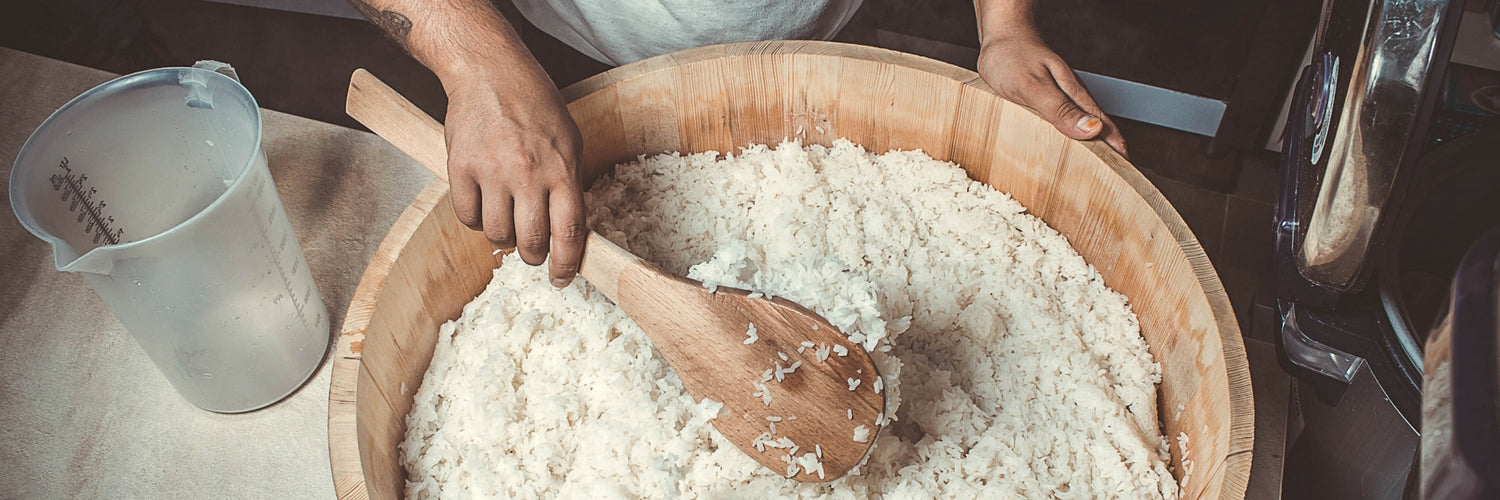
This feature covers the ingredients, tools, and techniques to craft genuine sushi rice like a pro. From buying authentic Japonica rice and necessary equipment to crafting restaurant-quality sushi rice, Umami Insider shows you the way.
Just like the itamae who amass decades of experience to reach master sushi chef status, you too have to start at the bottom to make enjoyable sushi at home, and that means mastering sushi rice, or sumeshi. You can’t make genuine sushi without genuine ingredients. You need Japonica rice, seasoned vinegar, and the proper tools. They help creating the texture, taste, and consistency that defines sushi — no ingredient substitutes, no shortcuts.
That said, once you accustom yourself to the intricacies of sushi rice and learn the technique, you’ll find it just as easy to prepare as any other rice.
The Ingredients
Any well-stocked Asian market will have everything you need to make sumeshi. If you don’t have access to an Asian market, you can find everything you need online.
- Japanese short-grain rice has no substitute. Using sushi rice (uruchimai) is as important to preparing genuine sushi as proper technique. It has a substantial, chewy bite and the stickiness needed to adhere to chopsticks. Several cultivars of rice fall under the uruchimai heading, such as sasanishiki and koshihikari, but to make it easier, shop by brands. Tamaki Gold and Nishiki, both readily available in the U.S., have excellent taste and texture and sell at reasonable price points. If you can afford to, go with an imported brand — sasanishiki varieties of Cocome Premium and Iris Ohyama are some of the best. Any brand you buy should have “First Crop” or “New Variety” on the package. If it has a Japanese label, ask the grocer if the rice is shinmai, which signifies the most recent harvest.
- Seasoned vinegar — nothing more than rice vinegar, sugar, and salt — plays a perfect foil to the delicate sweetness of fresh seafood sashimi. Even though you can buy prepared seasoned vinegar in most grocery stores, make your own so you can adjust the sweetness and saltiness to taste. Sennari's organic rice vinegar is a quality product to look for.
- Optional ingredients include kombu and sake or mirin. Kombu and a touch of sake or mirin adds a kick of umami and a malted essence redolent of dashi. However, it’s a matter of preference if you choose to include them.
Tools and Equipment
You can make sushi rice without the following tools, but you’ll have to improvise. You can purchase all of the following at Asian markets or through online vendors.
- Hangiri (also called a handai or sushi oke) makes the ideal vessel for sushi rice. It cools sushi rice quickly and prevents it from clumping together. Made from untreated cypress or cedar, the hangiri absorbs excess moisture, and its flat bottom works perfect with a sushi paddle. A 16-inch-wide, 4-inch-tall hangiri holds 12 to 16 cups of rice. Season the hangiri before use with hot water and vinegar. If you don’t have a hangiri, you can substitute a large roasting pan.
- A rice paddle and fan cool the rice while mixing the seasoning into it. Rice paddles have a thin profile that allows you to separate the grains of rice without smashing them, while the fan hastens cool-down, imperative to avoiding clumps. You can also use an electric fan (set to low) placed about three feet from the rice.
Get the Umami Insider recipe for sushi rice here.
